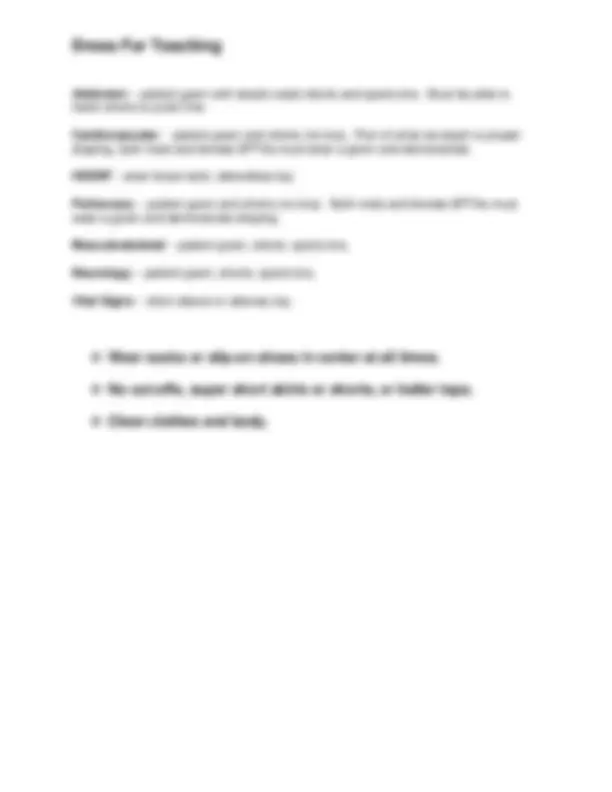





Study with the several resources on Docsity

Earn points by helping other students or get them with a premium plan


Prepare for your exams
Study with the several resources on Docsity

Earn points to download
Earn points by helping other students or get them with a premium plan
Community
Ask the community for help and clear up your study doubts
Discover the best universities in your country according to Docsity users
Free resources
Download our free guides on studying techniques, anxiety management strategies, and thesis advice from Docsity tutors
The goals and objectives of Focused Exam (FEX) Standardized Patient Teaching Associate (SPTA) sessions. The sessions aim to teach medical students the basic techniques of physical examinations in an organized and systematic manner, while ensuring a non-threatening learning experience. SPTA sessions also emphasize the importance of the doctor-patient relationship and patient communication. Students should be able to perform examinations respectfully and effectively, communicate clearly with patients, and develop a partnership with them.
What you will learn
Typology: Study notes
1 / 5

This page cannot be seen from the preview
Don't miss anything!




A Standardized Patient Teaching Associate (SPTA) is a person who has been trained to use his/her body to instruct and evaluate medical students in the following areas:
Communication skills are fundamental to the history and to the physical exam. The patient history has three essential functions: establishing rapport, gathering information, and negotiating management plans. A good history will yield a diagnosis 90% of the time; the physical examination is confirmatory. Physical examination is a very important time to maintain patient rapport and to attend to patient comfort and anxiety. It can also be an efficient time to conduct a review of systems, as long as you explain to the patient what you are doing and why.
Before beginning each area of a physical exam, you should tell your patient:
Abdomen – patient gown with elastic waist shorts and sports bra. Must be able to lower shorts to pubic line.
Cardiovascular - patient gown and shorts (no bra). Part of what we teach is proper draping, both male and female SPTAs must wear a gown and demonstrate.
HEENT - wear loose neck, sleeveless top.
Pulmonary – patient gown and shorts (no bra). Both male and female SPTAs must wear a gown and demonstrate draping.
Musculoskeletal – patient gown, shorts, sports bra.
Neurology – patient gown, shorts, sports bra.
Vital Signs – short sleeve or sleeves top.